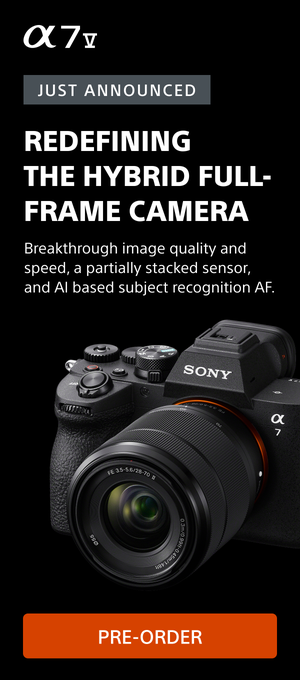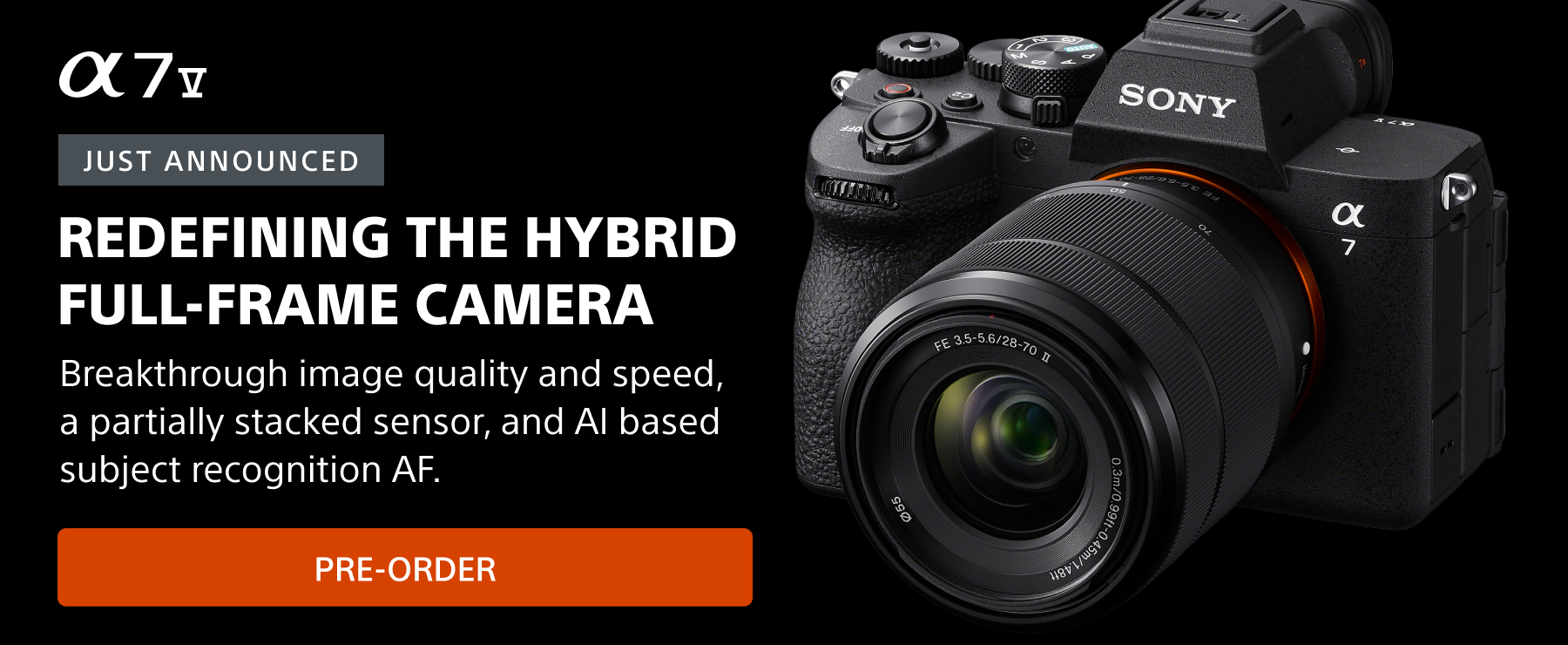Prime lenses have a history of being favorite tools among advanced and professional photographers – and for good reason. These fixed focal length lenses offer benefits that can elevate your photography both in terms of how you "see" when you're taking photos and the resulting images themselves. Zooms can be indispensible for any photographer, but if you've eschewed primes, for whatever reason, now is a good time to reconsider. Here are seven reasons why you should consider adding prime lenses to your gear arsenal and some options to think about:
1. Optical Quality
Prime lenses are renowned for their exceptional optical quality and sharpness. With fewer glass elements and a simpler design, prime lenses are known for image clarity, sharpness to the edge of the frame, contrast and resolution. When paired with a high-resolution Sony Alpha camera like the Alpha 7R V, you can achieve stunning results.
2. Wider Apertures For Low Light Performance
Many prime lenses feature wide maximum apertures, such as f/1.8, f/1.4 and even, as is the case with the Sony 50mm f/1.2 G Master, f/1.2. Those "fast" maximum apertures have many benefits including excellent low light performance and beautiful background blur (bokeh). This makes prime lenses ideal for shooting in dimly lit environments or achieving striking shallow depth of field effects. In low light, with a prime lens you can user faster shutter speeds and lower ISOs than are possible with other lenses.

Photo by Jeremy Cohen. Sony Alpha 1. Sony 35mm f/1.4 G Master. 1/2500-sec., f/1.4, ISO 1000
3. Compact & Lightweight Design
Prime lenses are often small and light , making them more portable and convenient for travel and on-the-go shooting. Pairing a prime lens like the Sony 35mm f/1.4 G Master with a lightweight Sony Alpha camera ensures maximum mobility without sacrificing image quality. And for a really compact setup, look at a camera like the Sony Alpha 7C II and the Sony 35mm f/2.8. That combination is especially popular for photographers maintaining a low profile when they're shooting.
4. Creative Flexibility & Composition
Fixed focal length primes encourage photographers to move and compose creatively, challenging them to find the perfect framing for their shots. This increased involvement in the photographic process can lead to more visual experimentation, exploration, and thoughtful and impactful compositions. For a fun exercise, try limiting yourself to a single prime lens for a month and try to go out shooting as much as possible. You'll start to "see" differently and you'll find yourself moving through a scene to find the perfect composition in a new way.

Photo by Paola Franqui. Sony Alpha 7CR. Sony 35mm f/1.4 G Master. 1/400-sec., f/3.5, ISO 320
5. Enhanced Sharpness & Detail
Due to their simpler optical construction, prime lenses often deliver top-shelf sharpness and detail, especially when shooting at wider apertures. Couple this level of clarity with a high resolution camera like the Sony Alpha 7R V or Alpha 7CR and you'll find that you're able to capture intricate textures and fine details in your images.
6. Fast Autofocus Performance
Many modern prime lenses, especially those designed for Sony Alpha cameras, feature advanced autofocus systems that deliver lightning-fast and accurate focusing. Whether you're capturing fast-moving subjects or shooting in challenging conditions, you can rely on your prime lens to keep up with the action.

Photo by Scott Robert Lim. Sony Alpha 9 III. Sony 50mm f/1.2 G Master. 1/26000-sec., f/1.8, ISO 250
7. Affordability and Value
While some high-end prime lenses can be expensive, many budget-friendly options offer excellent performance and value at relatively low cost. Investing in a quality prime lens represents a long-term investment in your photography, providing years of reliable service and exceptional image quality.
Prime lenses are indispensable tools for creators looking to elevate their craft. With their combination of optical quality, wide apertures, compact design, and creative flexibility, prime lenses offer a multitude of benefits that can enhance your photography in countless ways.



